
A strong website and recognizable corporate identity
Groosman Bedrijfswagens, located in Sas van Gent, Zeeuws-Vlaanderen, has specialized in the maintenance and repair of trucks and commercial vehicles since 1972. As a proud, certified aftersales dealer of Mercedes-Benz Trucks, Groosman guarantees quality and service.
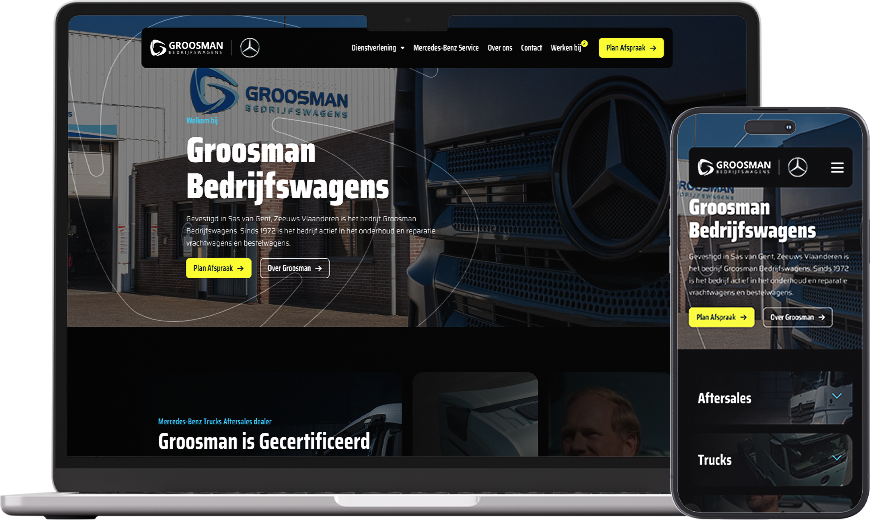
A professional appearance through a strong website and corporate identity
Groosman Bedrijfswagens was looking for a way to strengthen their brand online and better serve their customers. At a time of increasing competition and digitalization, Groosman realized that updating their website and a consistent corporate identity were essential to differentiate themselves.
They wanted an online presence that was not only functional, but also reflected the reliability and professionalism of their brand. Therefore, Groosman Bedrijfswagens decided to partner with Addmark to quickly and effectively launch a new website and develop a visual identity that aligned with their company values and target audience. This partnership focused on speed, personalized approach and delivering results within a short period of time.
A website that reinforces the brand
Functional, visually strong and conversion-oriented
Addmark developed a user-friendly, conversion-oriented website for Groosman Bedrijfswagens that perfectly matches their updated corporate identity. Rather than just a redesign, they moved quickly to launch an entirely new website that instantly inspires visitor confidence. The website is visually strong and offers a modern, uncluttered look and feel. By integrating the new corporate identity, the brand is consistently presented, contributing to the recognizability and professionalism of the company. In addition, we support Groosman Bedrijfswagens by creating relevant content, including blog posts that contribute to the company's SEO goals. This approach ensures that Groosman Bedrijfswagens achieves their online goals quickly and efficiently, and serves their customers optimally.
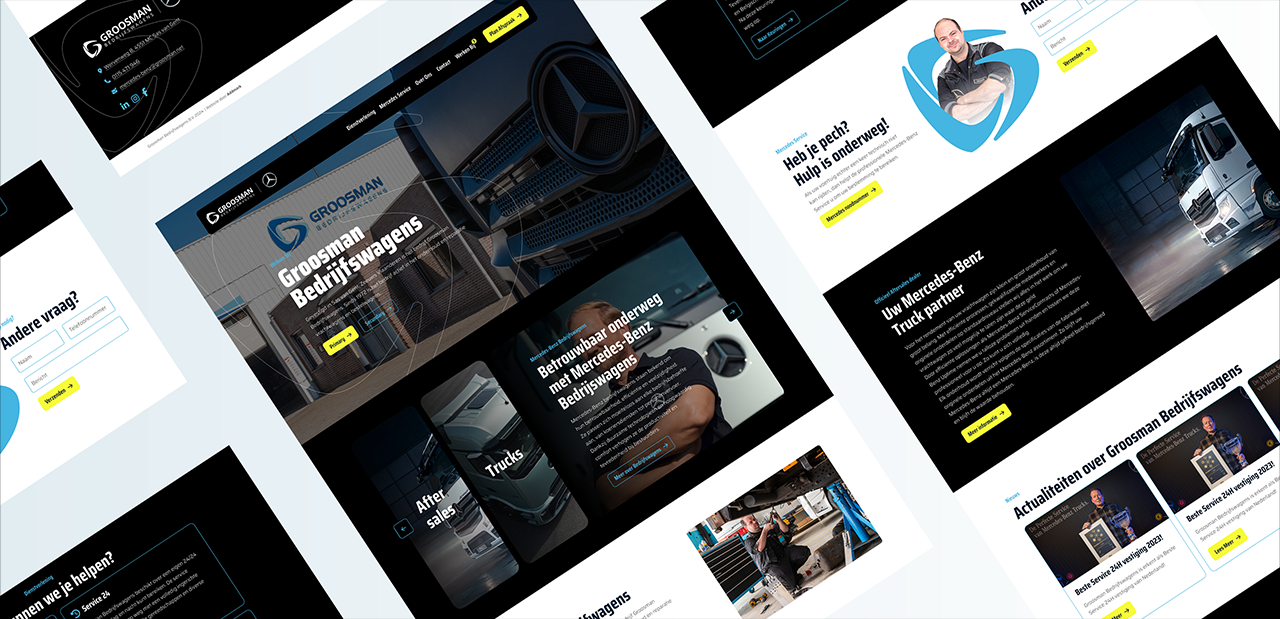
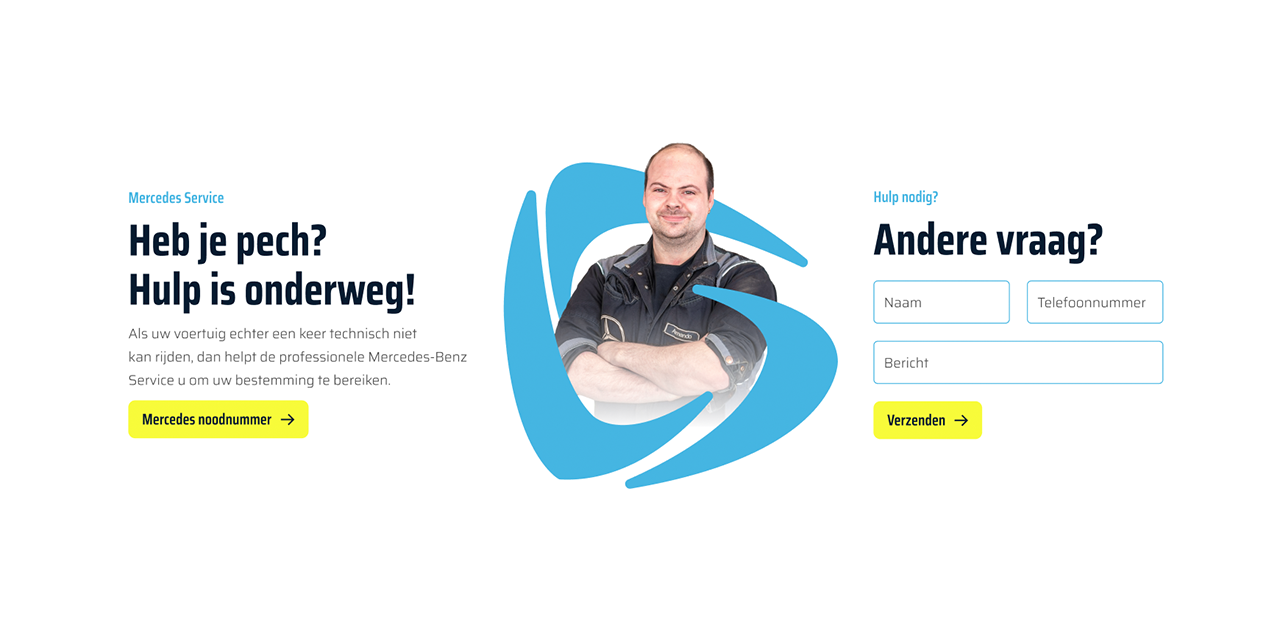
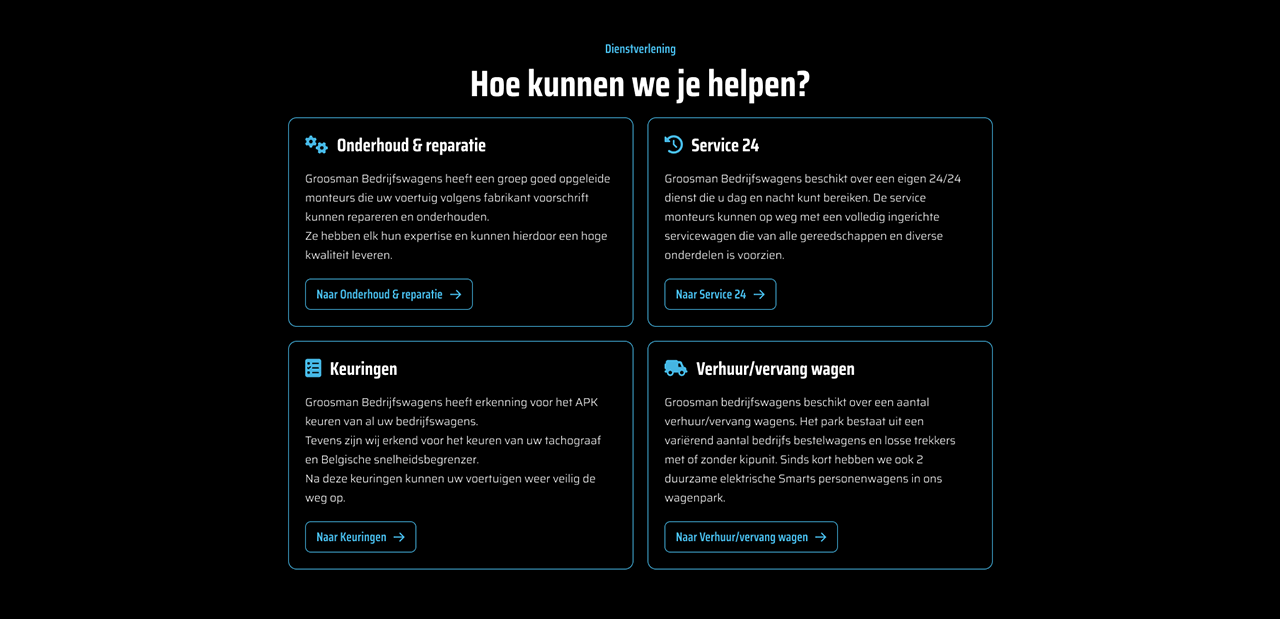
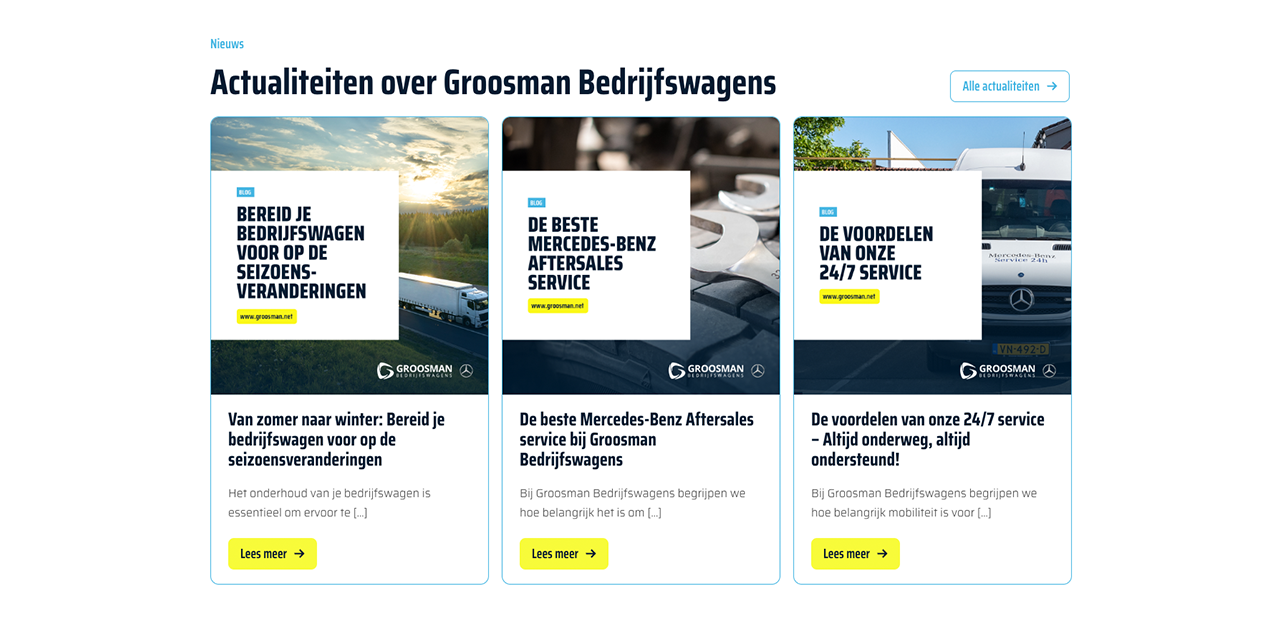




Tight planning & maximum results
Through a strategic approach and clear roadmap, we always deliver our websites with a clear goal in mind. This strengthens the synergy between design, development and marketing to achieve maximum results. How do we do that? We can tell you in 5 steps.
A Web site project begins with mapping wireframes. In this essential step, it is important to have input in the form of user stories and also to have the purpose of the Web site clearly in mind. Wireframing is basically creating a sketch of the website that shows the basic structure of the pages. At this stage we still leave out all design elements such as colors or images, it is purely about the purpose of the pages. The final wireframes help our designers focus on the user experience (UX) by making navigation and interaction on the website understandable. In this phase of the website, we continuously test whether the elaboration of the page is functional for the visitor. Ultimately, this phase also ensures efficiency in the further course of the project. The clearer we can draw up the wireframes, the smoother the process continues.
After the wireframing phase, we have a functional blueprint for our designer to work with. This is where the visual elements and aesthetics of the website come to life. We start adding colors, typography and other elements to shape the pages. Spaces, line heights, contrast and many other elements that affect how the website works are taken into account. Added to that is the fact that today we are dealing with different devices. The website should be easy to use on any screen size, and that sometimes requires just a few tweaks in the design to achieve a good result. In the end we make a working design, so that we have a clickable 'prototype' of the website. This allows you to fine-tune together whether everything is to your liking.
In the development phase, things start to get even more fun. The visual and interactive design is transformed into a working website. Besides becoming tangible, this phase is also enormously crucial. We start coding the website in a test environment. This keeps the website still out of harm's way from search engines or other external parties. Front-end and back-end development work together to both convert the designs into HTML, CSS and/or JavaScript, but also to set up the server side properly. During this phase, extensive testing is also done to ensure that the design actually works properly on all devices. Tests are also performed when it comes to the performance of the website. Think about pagespeed and possible health score tests. Of course it is important that your website is delivered in a secure way and we pay attention to SSL, security protocols and any software updates that are required.
Once the development phase is complete, the right content must of course be displayed on the pages. This is a phase that can lie entirely with the client, but also partly with Addmark or entirely with us. In any case, it is crucial to think about possible redirects. You do not want to lose valuable positions within the search engines during a migration due to missing redirects. By performing an extensive scan of the current website, we map out the current redirects and combine them with any new redirects that are required. We also take into account Meta titles and texts, internal links, URL structure, breadcrumbs, compressed images, ALT texts and other content-related issues. This immediately makes your website SEO-proof to be properly indexed by Google, Bing or other search engines.
The final phase has arrived: going live! The content is in place, the migration plan is completely thought out and can be implemented. We choose a moment in the week when visitor numbers are the lowest. This way, the impact for the visitors is the least and the migration can be worked on carefully. In addition, it is important that everyone involved be ready for any setbacks so that quick action can be taken. Once the redirects are loaded, the transfer to the main domain can begin. Once the migration is complete, we test the entire website one more time. We make sure that all buttons work properly, all links are set to the correct domain and that no strange 404s or redirect loops have occurred. Finally, we test the pagespeed and the overall health score of the website, so that everything works properly and the website is finally part of the world wide web.
A Web site project begins with mapping wireframes. In this essential step, it is important to have input in the form of user stories and also to have the purpose of the Web site clearly in mind. Wireframing is basically creating a sketch of the website that shows the basic structure of the pages. At this stage we still leave out all design elements such as colors or images, it is purely about the purpose of the pages. The final wireframes help our designers focus on the user experience (UX) by making navigation and interaction on the website understandable. In this phase of the website, we continuously test whether the elaboration of the page is functional for the visitor. Ultimately, this phase also ensures efficiency in the further course of the project. The clearer we can draw up the wireframes, the smoother the process continues.
After the wireframing phase, we have a functional blueprint for our designer to work with. This is where the visual elements and aesthetics of the website come to life. We start adding colors, typography and other elements to shape the pages. Spaces, line heights, contrast and many other elements that affect how the website works are taken into account. Added to that is the fact that today we are dealing with different devices. The website should be easy to use on any screen size, and that sometimes requires just a few tweaks in the design to achieve a good result. In the end we make a working design, so that we have a clickable 'prototype' of the website. This allows you to fine-tune together whether everything is to your liking.
In the development phase, things start to get even more fun. The visual and interactive design is transformed into a working website. Besides becoming tangible, this phase is also enormously crucial. We start coding the website in a test environment. This keeps the website still out of harm's way from search engines or other external parties. Front-end and back-end development work together to both convert the designs into HTML, CSS and/or JavaScript, but also to set up the server side properly. During this phase, extensive testing is also done to ensure that the design actually works properly on all devices. Tests are also performed when it comes to the performance of the website. Think about pagespeed and possible health score tests. Of course it is important that your website is delivered in a secure way and we pay attention to SSL, security protocols and any software updates that are required.
Once the development phase is complete, the right content must of course be displayed on the pages. This is a phase that can lie entirely with the client, but also partly with Addmark or entirely with us. In any case, it is crucial to think about possible redirects. You do not want to lose valuable positions within the search engines during a migration due to missing redirects. By performing an extensive scan of the current website, we map out the current redirects and combine them with any new redirects that are required. We also take into account Meta titles and texts, internal links, URL structure, breadcrumbs, compressed images, ALT texts and other content-related issues. This immediately makes your website SEO-proof to be properly indexed by Google, Bing or other search engines.
The final phase has arrived: going live! The content is in place, the migration plan is completely thought out and can be implemented. We choose a moment in the week when visitor numbers are the lowest. This way, the impact for the visitors is the least and the migration can be worked on carefully. In addition, it is important that everyone involved be ready for any setbacks so that quick action can be taken. Once the redirects are loaded, the transfer to the main domain can begin. Once the migration is complete, we test the entire website one more time. We make sure that all buttons work properly, all links are set to the correct domain and that no strange 404s or redirect loops have occurred. Finally, we test the pagespeed and the overall health score of the website, so that everything works properly and the website is finally part of the world wide web.

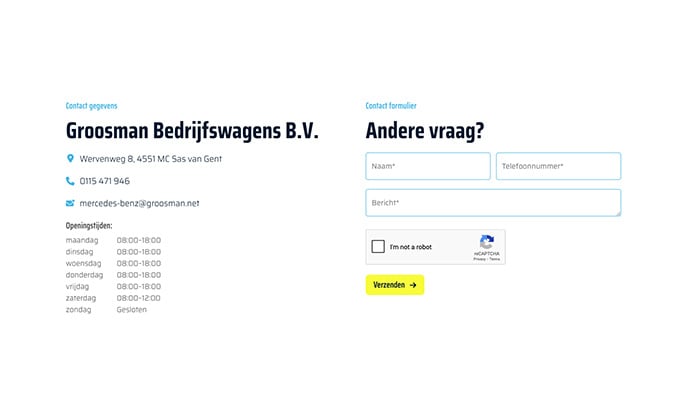

Projects we are proud of!
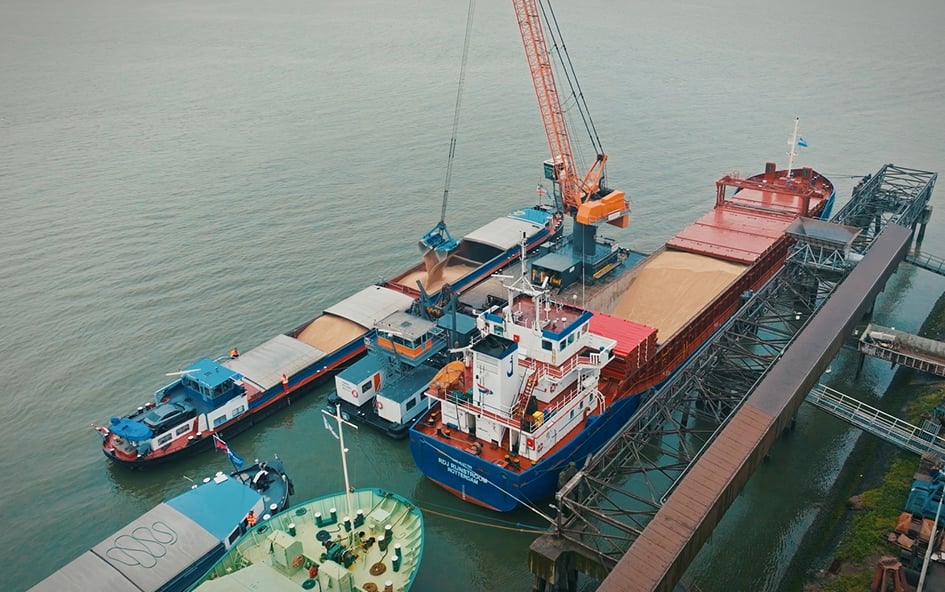

Binnen 6 weken volledig operationeel met HubSpot
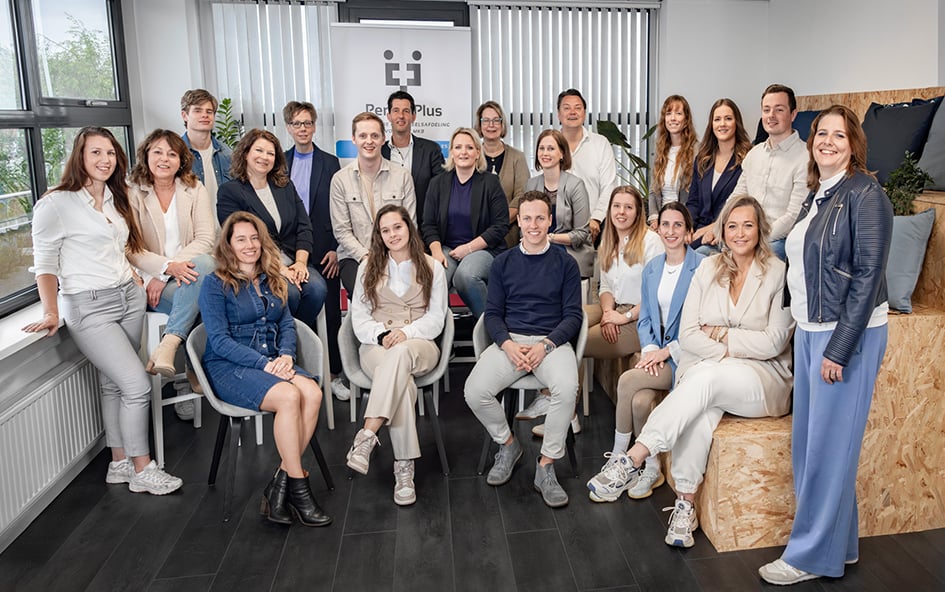

Lastige vacature? Binnen 14 dagen vier gekwalificeerde kandidaten


Aantoonbare sales via marketinginspanningen
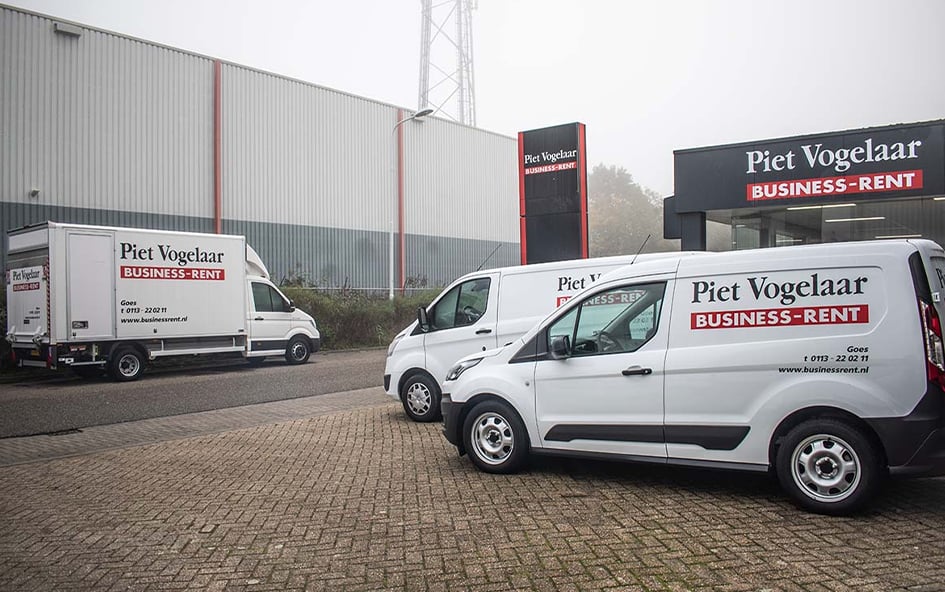

Meer dan 200 conversies in Q1 2025 dankzij Performance Max campagnes
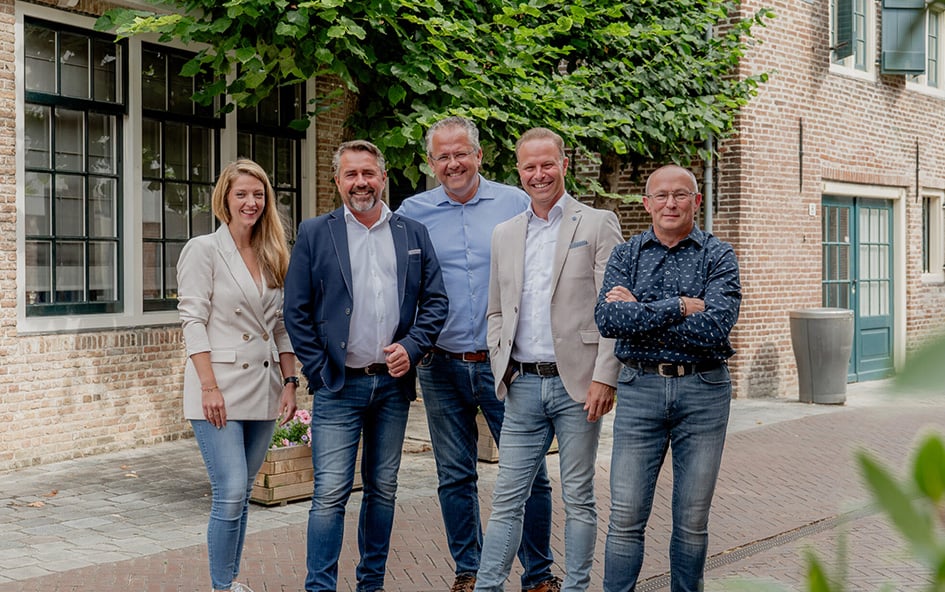

258% meer klikken dankzij Performance max
Want to know how HubSpot can help you?
